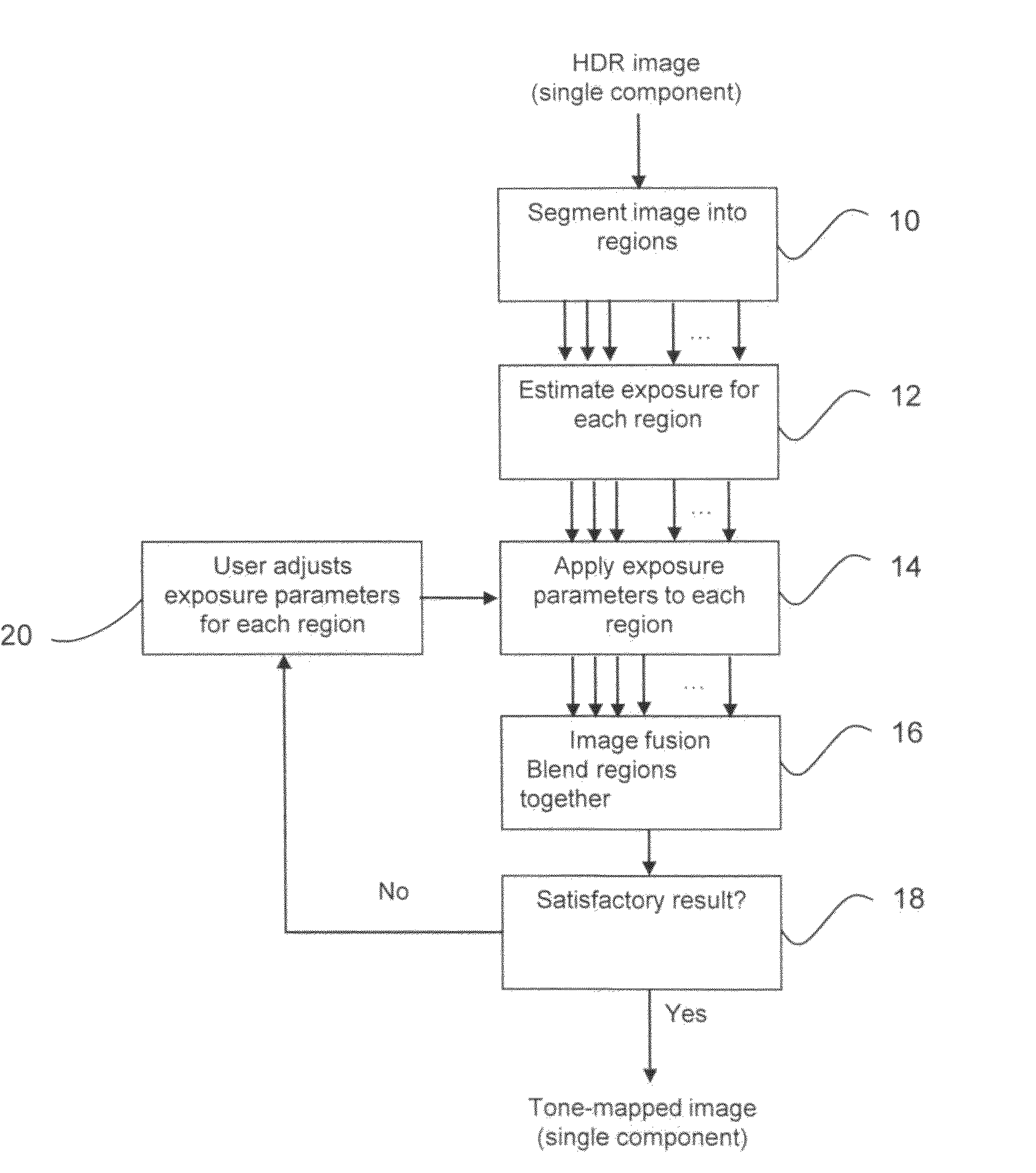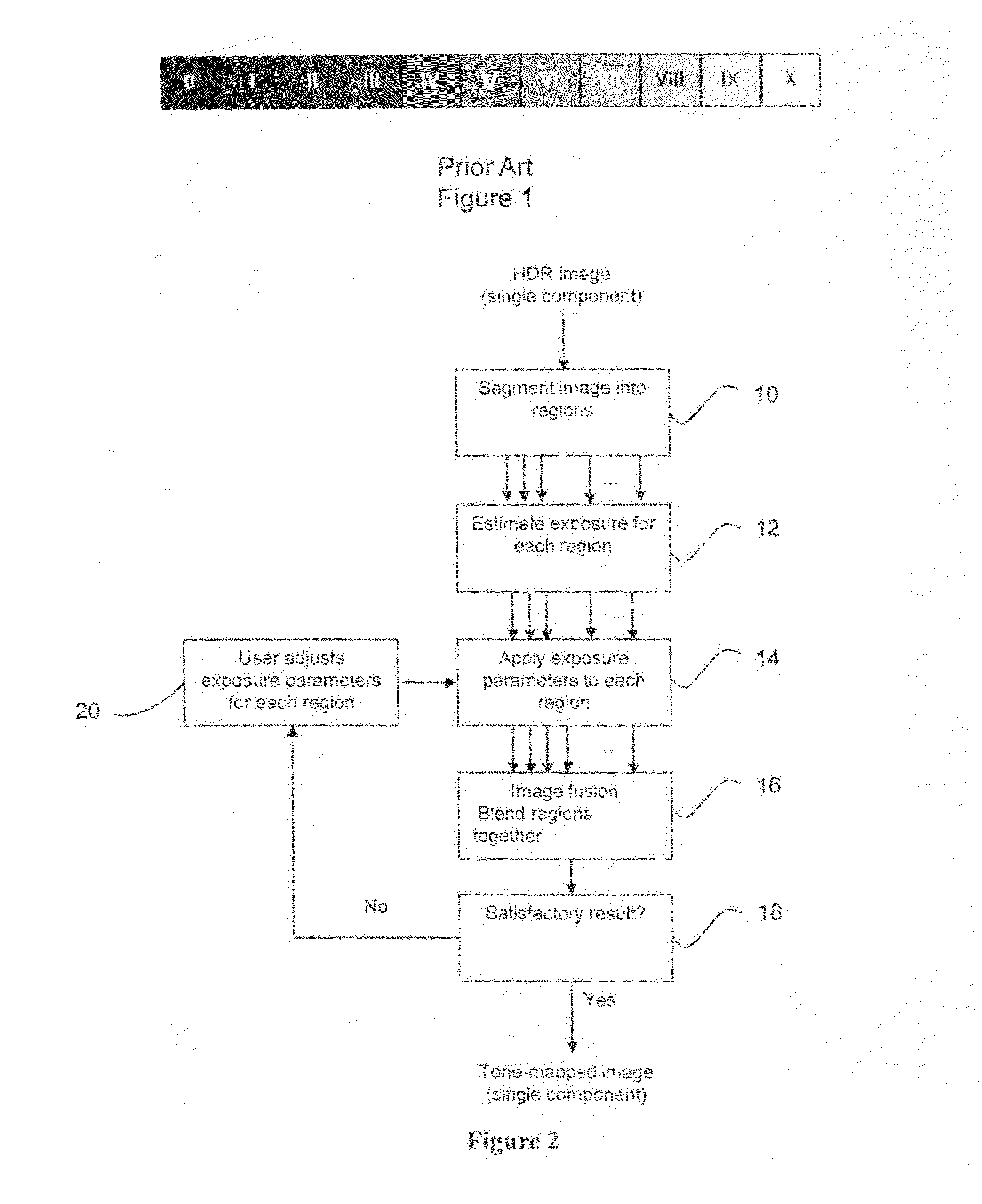Automatic exposure estimation for HDR images based on image statistics
an exposure estimation and image technology, applied in the field of automatic exposure estimation of hdr images based on image statistics, can solve the problems of manual processing, inability to implement any sort of exposure correction, and high time consumption, and achieve the effect of preserving overall brightness
- Summary
- Abstract
- Description
- Claims
- Application Information
AI Technical Summary
Problems solved by technology
Method used
Image
Examples
Embodiment Construction
[0013]The invention will now be described in more detail wherein a method adjusts the exposure of each region based on the overall brightness level of the original HDR image.
[0014]In order to display an HDR image on a LDR display device, a tone mapping method must be employed to map the HDR image, which is usually available as radiance, to 8bit RGB index numbers. The tone mapping process is not straight forward because it has to simulate the process that happens in the HVS so that the tone mapped LDR image can deceive the HVS into believing it is close enough to the original HDR image. This requires the tone mapping algorithm to be able to maintain both the local contrast and the perceptual brightness.
[0015]The invention provides a method to estimate the exposure of regions of an HDR image to maintain the perceptual brightness. It is especially suited to region-based tone mapping algorithms.
[0016]The method according to the invention includes a zone-based tone mapping framework whic...
PUM
 Login to View More
Login to View More Abstract
Description
Claims
Application Information
 Login to View More
Login to View More - R&D
- Intellectual Property
- Life Sciences
- Materials
- Tech Scout
- Unparalleled Data Quality
- Higher Quality Content
- 60% Fewer Hallucinations
Browse by: Latest US Patents, China's latest patents, Technical Efficacy Thesaurus, Application Domain, Technology Topic, Popular Technical Reports.
© 2025 PatSnap. All rights reserved.Legal|Privacy policy|Modern Slavery Act Transparency Statement|Sitemap|About US| Contact US: help@patsnap.com



